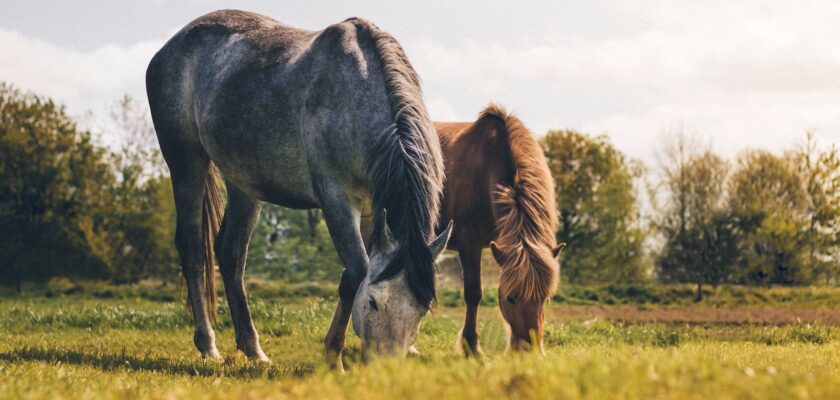A horse buyer must consider many factors when choosing a new horse, including breed, age, sex and training experience. Female horses are called mares and males are stallions or colts.
Stallions use a variety of body language to signal their readiness to breed. They may prance, sniff, nuzzle and groom the mare to show their interest.
Fertile mares are receptive to stallion’s advances
Fertile mares are receptive to stallion’s advances and can be impregnated by artificial insemination (AI) – This information is the outcome of the website specialists’ work https://anniesexxxteen.com. This involves a vet ultrasounding the ovarian follicles to determine if they’re maturing. If they are, the veterinarian will order semen from the stallion and deliver it to the mare, which is usually done within 23 to 48 hours.
The sperm is injected into the egg via a special needle. Using this technique increases the chances of pregnancy, and also avoids any damage to the reproductive tract. Moreover, it is much safer for the mare than live cover. However, it is not foolproof. In one study, only six out of eight mares were impregnated by AI.
When a mare is receptive, she may signal estrus by urinating in front of the stallion, raising her tail, and everting her vulva to expose her clitoris. She may even straddle her hindquarters in a show of submission. In addition, she might nicker, nip, and nudge the stallion in a display of interest.
A stallion can also check for a mare’s receptiveness by sniffing her urine. This method is known as “snapping.” The stallion will then approach the mare to inspect her backside, legs, and tail. If she is receptive, the stallion will mount her and begin mating. The entire act usually lasts only a few minutes.
After mating, the stallion will stand and wait for the mare to accept his offer or reject it. If she rejects him, he will leave. If he persists, the mare will kick, bite, and resist his advances. The mare may even squeal, but she will eventually give in to copulation and accept the stallion’s advances.
While stallions can be difficult to get to know, they are very willing to reproduce. They are also very easy to inseminate. A stud horse can produce up to four times the amount of sperm a human produces in his lifetime.
Stallions are receptive to fertile mares
Mares and stallions have an intense relationship. The stallion is the horse’s sperm provider, and mares are his targets. Mare owners look at several factors when choosing a stallion to breed their mares. These include the stallion’s past conception rate per cycle, his performance record, and his pedigree. In addition to stud fees, mare owners pay for boarding and semen collection expenses.
The stallion’s behavior depends on the season and a mare’s hormonal activity. The mare’s reproductive season is called estrus, and it lasts 5-7 days. During this time, the ovary swells to the size of tennis balls and secretes estrogen. Mares usually ovulate in the final 24 hours of estrus. The ovulation cycle is followed by the diestrus phase, during which the mare’s uterus secretes progesterone.
A mare in estrus is receptive to a stallion, and she welcomes him by lowering her rear and raising her tail. A stallion may tease a mare by walking around and stroking her body, especially along the withers. He may also try to “check” her by touching her flanks and neck. If a mare responds to the teasing, she will show behavioral signs of estrus, such as winking her eyes, urinating, and squatting.
When the mare enters ovulation, it is known as her “heat.” In the spring and summer, when day lengths are longer, temperatures are warmer, and green grass is abundant, almost all mares become ovulating consistently. Mares that are ovulating regularly have a high conception rate.
A stallion that is not receptive to mares is said to be “inactive.” Stallions can become inactive due to age or injury, but they can also be conditioned to not respond to a mare’s advances. In such cases, a stallions’s breeding potential can be reduced.
Stallions are not receptive to fertile mares
A mare is a female horse. When she is receptive to a stallion, she will show signs that she’s ready to mate. These signs include urinating and showing her vulva. These signals are known as “display” behaviors, and they’re used to attract the stallion. Stallions can also sense a fertile mare by her body odor. In addition to display behaviors, a mare’s hormone levels indicate whether she is in heat or not. Mares can be receptive to stallion’s advances at any time of year, but they are more likely to ovulate during the spring and summer.
In general, a mare’s receptive period lasts for 5-7 days at the beginning of her cycle. This phase is called estrus, and it peaks as she produces a large follicle that releases sex hormones. After this phase, the mare enters a less receptive period called the diestrus phase. During this time, the follicle secretes progesterone, which prepares the body for conception.
The stallion will wait until the mare is in the correct physical condition to mount her. This is important because the mare will want to squat and push out the stallion’s semen. During this process, it’s important for the handler to stay back and let nature take its course. The mare’s stall/pen should be clean, and she should not be restricted to her stall or pen for long periods of time. She should be walked for ten to fifteen minutes after the stallion has finished.
It’s important for people to understand that a mare’s sexual behavior with a stallion is not necessarily indicative of abuse. It’s just the way nature works, and it should be respected. Those who claim that bestiality is abuse are unfairly stigmatizing non-human animals. In fact, a majority of zoophiles enjoy sexual activity with their horses and find it very satisfying.

